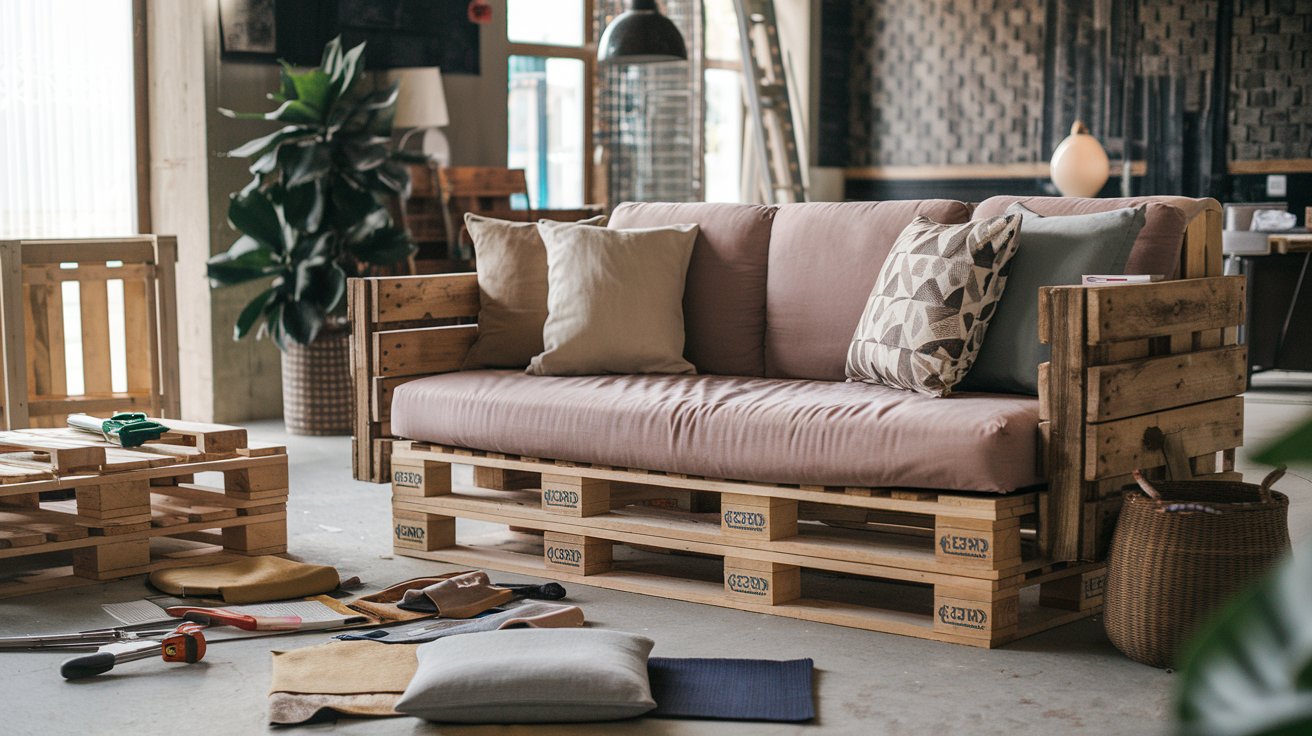DIY Couches: Step-by-Step Guide to Building Your Own Custom Sofa at Home
Table of Contents
Introduction
Looking for a budget-friendly way to personalize your living space? A DIY couch might be the perfect project. With rising furniture costs and a growing interest in sustainable, custom home solutions, building your own sofa has become an increasingly popular trend. In fact, searches for “DIY sofa ideas” have grown by over 40% year-over-year (according to Google Trends 2024).
Whether you’re dealing with a small space, unique style preferences, or simply love a good weekend project, creating your own couch gives you complete control over materials, size, comfort level, and aesthetics. Plus, it can be surprisingly cost-effective and incredibly satisfying.
This comprehensive guide walks you through the entire process of building your own sofa—from planning and measuring to construction and upholstery. By the end, you’ll have a customized piece that suits your space and reflects your personal taste.
Outline
1. Why Build Your Own Couch?
- Save money on custom or designer pieces.
- Customize dimensions, fabrics, and firmness.
- Learn valuable woodworking and upholstery skills.
- Reduce waste through sustainable DIY practices.
Table: DIY vs. Store-Bought Sofa Comparison
| Feature | DIY Sofa | Store-Bought Sofa |
| Cost | $150–$500+ | $600–$2,500+ |
| Customization | Full | Limited |
| Durability | Depends on materials used | Varies by manufacturer |
| Style Options | Unlimited | Pre-determined |
2. Planning Your DIY Couch Design
- Decide on the size (2-seater, sectional, loveseat, etc.).
- Consider functionality (storage, modular design, sleeper).
- Choose a style: minimalist, mid-century, boho, farmhouse.
- Sketch or use a free 3D furniture planner.
3. Materials and Tools You’ll Need
- Lumber (pine, plywood, or MDF for frame).
- Foam, batting, upholstery fabric.
- Wood screws, brackets, and construction adhesive.
- Tools: drill, saw, staple gun, measuring tape.
Table: Essential DIY Couch Materials Checklist
| Material | Purpose |
| 2×4 Lumber | Base frame and supports |
| Plywood Sheets | Seat platform and backrest |
| High-Density Foam | Cushion support and comfort |
| Upholstery Fabric | Final visual finish |
| Wood Glue & Screws | Structural bonding and assembly |
4. Step-by-Step Instructions: Building the Frame
- Cut lumber to match desired dimensions.
- Assemble base box with cross supports.
- Add backrest and armrests if desired.
- Secure with screws and reinforce with brackets.
5. Cushioning and Upholstery Tips
- Use high-density foam (4–6 inches thick) for seat cushions.
- Wrap foam in batting for a plush look.
- Staple upholstery fabric tightly and evenly.
- Add zippers or velcro for removable covers.
Table: Foam Types for DIY Couches
| Foam Type | Firmness | Best For |
| High-Density Foam | Firm | Long-lasting seat cushions |
| Memory Foam | Medium | Added softness |
| Polyurethane Foam | Soft | Back cushions and accents |
6. Finishing Touches and Styling
- Add legs: hairpin, wood block, or casters.
- Attach trim, buttons, or tufting for detail.
- Accessorize with throw pillows and blankets.
- Stain or paint any exposed wood.
7. Common Mistakes to Avoid
- Skipping measurements or support braces.
- Choosing low-quality foam or fabric.
- Over-stretching upholstery (causes puckering).
- Using non-durable construction methods.
8. Budget Breakdown and Cost-Saving Tips
- Shop reclaimed or leftover wood from hardware stores.
- Reuse foam from old cushions or mattresses.
- Look for fabric sales or upcycle curtains.
- Use DIY plans or templates to avoid design mistakes.
Table: Sample DIY Couch Budget (2-Seater)
| Item | Estimated Cost |
| Lumber and Plywood | $60–$100 |
| Foam and Batting | $80–$120 |
| Fabric (4–6 yards) | $40–$80 |
| Hardware & Adhesives | $30–$50 |
| Tools (if needed) | $50–$100 (one-time) |
Detailed Content Expansion
4. Step-by-Step Instructions: Building the Frame
Building a solid couch frame is the foundation of your DIY project. It ensures your sofa is stable, safe, and built to last.
Start by cutting your 2x4s or 2x6s to form the base box—this is the part that holds your cushions. Common dimensions for a two-seater are around 60″ wide, 36″ deep, and 18″ high. Cut four horizontal pieces to form the outer perimeter and reinforce them with cross supports every 15–18 inches.
Next, attach vertical legs or wood blocks if desired. Then build a backrest using plywood or additional studs angled slightly backward for comfort. Add armrests if your design includes them.
Use wood glue and screws for strong joints, and reinforce stress points with L-brackets. Test the frame for wobble or movement before proceeding.
Table: Frame Construction Timeline
| Step | Time Estimate |
| Cutting lumber | 30–60 minutes |
| Assembling base | 1–2 hours |
| Adding backrest/arms | 1–2 hours |
| Reinforcing joints | 30 minutes |
Pro Tip: Pre-drill holes to avoid splitting wood, especially in pine or MDF.
5. Cushioning and Upholstery Tips
Now it’s time to add comfort and style. Start by cutting your high-density foam to fit the seat and back platforms. Foam should be about 4–6 inches thick for a comfortable seating experience. Wrap foam in polyester batting to round the edges and add softness.
Lay your upholstery fabric face-down, place the foam and batting on top, then your plywood or cushion base. Pull fabric taut and use a staple gun to secure it in place, starting from the center and working outward for even tension.
Choose durable, high-performance fabric—cotton canvas, chenille, velvet, or even outdoor fabrics for added stain resistance. For a polished look, consider adding piping or tufted buttons.
If you’re making removable covers, sew in zippers or velcro strips so you can clean or replace them over time.
Table: Upholstery Fabric Comparison
| Fabric Type | Durability | Look/Feel | Ideal Use |
| Cotton Canvas | High | Casual, modern | Seat cushions |
| Velvet | Medium | Luxurious, soft sheen | Accent pieces |
| Faux Leather | High | Sleek, easy to clean | Armrests, base |
| Linen Blend | Medium | Light, textured | Back cushions |
Pro Tip: Always buy extra fabric (10–15% more) to account for errors or future repairs.
Conclusion
Building your own couch is more than a DIY project—it’s an opportunity to create a custom piece of furniture tailored to your exact needs, space, and style. With thoughtful planning, quality materials, and a bit of patience, you can design a sofa that rivals store-bought options—often for a fraction of the price.
From constructing a sturdy frame to choosing the right foam and upholstery, every step lets you infuse your space with personality and practicality. Whether you’re a weekend warrior or a seasoned DIYer, the satisfaction of sitting on a couch you built yourself is hard to beat.

